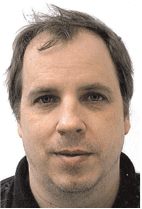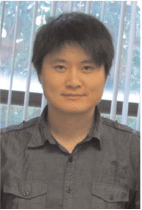Development of a 3D geological model of the Clarence-Moreton Basin: on the challenge of integrating petroleum systems and groundwater systems approaches
Matthias Raiber A , David Rassam A , Tao Cui A , Dan Pagendam A and Sreekanth Janardhanan ACSIRO Land and Water.
The APPEA Journal 55(2) 464-464 https://doi.org/10.1071/AJ14099
Published: 2015
Abstract
One of the key challenges to assist in the understanding of the potential impacts of coal seam gas (CSG) extraction is the development of robust geological and numerical models. In the Clarence-Moreton Basin, this task is complicated by the need to integrate shallow alluvial aquifers (typically less than 30 m thick) and deep bedrock aquifers, which can have a combined thickness of up to approximately 3,500–4,000 m in some parts of the basin. While shallow aquifers are not typically considered in petroleum reservoir studies, they are of great significance in the Australian government’s Bioregional Assessment Program as they host a range of valuable water-dependent assets. To address this challenge, the authors have developed a series of 3D geological models and flow simulation grids of different scales and resolutions, that will form the assessment’s basis. An accurate understanding of the potential connectivity pathways between the five major alluvial aquifer systems and the underlying Triassic to Cretaceous age units will underpin the prediction of potential impacts of depressurisation associated with CSG extraction from the Walloon Coal Measures, which is the major target of CSG exploration in the Clarence-Moreton Basin. The authors have used SKUA/GoCAD (Paradigm®) 3D geological modelling software to develop 3D geological models from elevation (DEM), and stratigraphic, seismic and lithological data to facilitate the development of reliable conceptual and numerical models that describe these connectivity pathways and constitute a road-map to a risk assessment of the potential impacts on water-related assets from CSG production in the basin.

Matthias Raiber is a research scientist at the CSIRO Land and Water Flagship based in Brisbane. He received his PhD from La Trobe University in Melbourne in 2010. Dr Raiber’s research interests focus on geology and hydrogeology, and in particular the development of 3D geological models and the characterisation of hydrodynamics of sedimentary basins. Before joining CSIRO in 2013, Dr Raiber has completed a post-doctoral research fellowship with the National Centre for Groundwater Research and Training at Queensland University of Technology. |

David Rassam has a background in civil engineering with a PhD in environmental geotechnics from the University of Queensland. He joined CSIRO in 2003, where he pursued a career in groundwater modelling with a specific interest in modelling surface-groundwater interactions. He is now a principal research scientist and leads the Clarence-Moreton bioregional assessment project. |

Tao Cui is a research scientist at the CSIRO Land and Water Flagship based in Brisbane. He received his PhD from the University of Windsor and China University of Geosciences in 2012. Dr Cui’s research interests centre on groundwater with emphasis on uncertainty analysis and deep groundwater systems. Before joining CSIRO in August 2012, Dr Cui’s research focused on deep groundwater (geofluid) systems, especially related to mineral deposits and sedimentary basins. |

Dan Pagendam received his PhD from the University of Queensland, where he investigated optimal experimental design for population models and epidemic models. Dan joined CSIRO as a research statistician in 2010 at Brisbane, and he works on a range of projects in the environmental domain. |

Sreekanth Janardhanan completed his PhD from James Cook University and has been working with CSIRO Land and Water as a research scientist, specialising in groundwater modelling, uncertainty analysis and optimisation. In this capacity, he is now leading a research project for GISERA, studying the groundwater impacts of coal seam gas activities in the Surat Basin. |
References
Barret, D.J., Couch, C.A., Metcalfe, D.J., Lytton, L., Adhikary, D.P., and Schmidt, R.K., 2013—Methodology for bioregional assessments of the impacts of coal seam gas and coal mining development on water resources. A report prepared for the Independent Expert Scientific Committee on Coal Seam Gas and Large Coal Mining Development through the Department of the Environment. Department of the Environment, Australia. Canberra: Independent Expert Scientific Committee on Coal Seam Gas and Large Coal Mining Development.Doig, A., and Stanmore, P., 2012—The Clarence Basin in New South Wales; geology, stratigraphy and coal seam characteristics. Fourth Eastern Australiasian Basins Symposium and Exhibition (EABS IV), Brisbane, Australia. 11–14 September.
Korsch, R.J., O’Brien, P.E., Sexton, M.J., Wake-Dyster, K.D., and Wells, A.T. (1989). Development of Mesozoic transtensinal basins in easternmost Australia. An international Geoscience Journal of the Geological Society of Australia 36, 13–28.
Rassam, D., Raiber, M., Mcjannet, D., Janardhanan, S., Murray, J., Gilfedder, M., Cui, T., Matveev, V., Doody, T., Hodgen, M., and Ahmad, M.E., 2014—Context statement for the Clarence bioregion. Product 1.1 from the Clarence Moreton Bioregional Assessment. Accessed 15 January 2015. <http://www.bioregionalassessments.gov.au/documents/context-statements/ba-clm-clm-110-contextstatement.pdf>.


